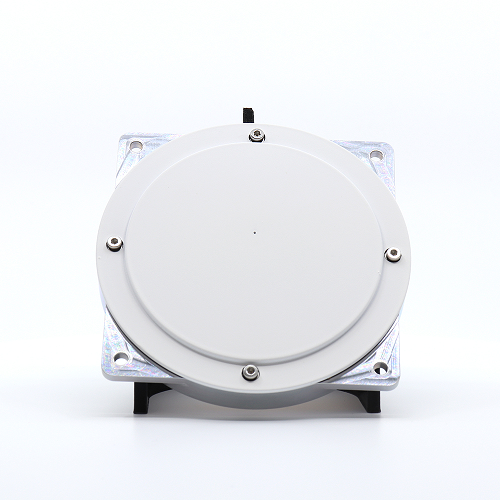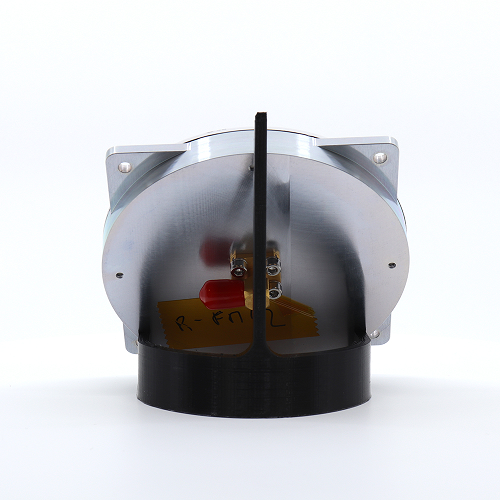
ANYWAVES the European antenna equipment manufacturer received an accreditation scheme for its S-Band TT&C antenna from French Space Agency (CNES) last year in December 2020. Apart from this the company’s X-Band Payload Telemetry Antenna and GNSS L1 / E1 Band Antenna designed thanks to additive manufacturing also received an accreditation scheme from CNES.
Aiming at becoming the leader of miniature antennas for satellites constellations, the company has strengthen its collaboration with other companies including the Indian start-up Pixxel.
Our team from THE GPS TIME had the exclusive email interview with ANYWAVES CEO Nicolas Capet, discussing their award-winning S-Band TT&C antenna, Indian Space market and ANYWAVES collaboration with Pixxel.
- THE GPS TIME: What drives you to work with Indian start-up Pixxel and how exciting Indian space market is for you?
Nicolas Capet: India is a key market for us, for many reasons.
First of all, the relationship between India and France regarding space matters is an old one, not to say an historic one ; and it felt natural for us, as a French Space Agency (CNES) spin-off, to be part of this dynamic.
Second, India has emerged as the fastest-growing major economy with an estimated GDP growth of 12 percent in 2019-20. It is the third-largest start-up hub in the world, being home to over 9,000 start-ups.*
Also, we are deeply aware of the importance India pays to space and how dynamic the Indian space market is.
Working with Pixxel is a great opportunity for us and a good way to enter the Indian space market.
We are both cutting-edge compagnies, with shared values and common visions upon the space industry and space challenges.
Moreover, since Pixxel is building constellations of high-resolution earth imaging satellites and since we are aiming at becoming the leader of miniature antennas for satellites constellations, the cooperation looked like a perfect match!
* figures from GNSS Asia Market & Technology Trends – 2020 edition
- THE GPS TIME: What is the most common trade off seen when we talk about miniaturization of Antenna?
Nicolas Capet: Miniaturization of the antennas while keeping good performances is a real challenge. We have to face the laws of physic, and more specifically Maxwell equations. Our job consists in offering products close to these fundamental limits.
Regarding the antennas for our customers, it is always a trade-off between the gain, the bandwidth, the polarisation… Depending on the application and other equipment associated to the capability of the platform, one can choose to maximize some antenna’s performance. This is due to the fact that each mission is unique and, since the antenna is a key performance equipment, has a different solution.
- THE GPS TIME: Do you also customize the antenna according to need?
Nicolas Capet: Yes, especially for payload antennas which are quite unique depending on the mission (orbit, power, frequencies, link budget…). Our strategy is to develop a new generation of payloads antennas allowing to minimize the cost of the customisation and the associated lead time to answer our customer needs.
On the other hand, some antennas can be generic when taking into account the associated function that is used on most of space systems. As an example, we propose COTS antennas for TT&C, X-band telemetry and navigation that are generic and can be used all over the world by any satellite manufacturer.
- THE GPS TIME: What is the most important factor that differentiates the antenna on the ground and in space?
Nicolas Capet: Between ground and space, the environment and operational constraints are completely different: huge temperature variation, solar radiation, vacuum, no way to repair or replace an equipment in space… For all these reasons, most of the ground equipment are not able to work in space for an operational mission.
As a consequence, all material and processes have to be carefully selected in order to withstand space. This also lead to intensive and expensive qualification and industrial process before being able to produce quickly space equipment with high level of quality. Since antennas are a single point of failure for space missions, quality is not an option : if the antenna fails, the mission fails too.
- THE GPS TIME: Kindly brief about the functions of the S-band TT&C Antenna?

Nicolas Capet: Our S-band TT&C antenna is optimized for platforms’ telemetry and telecommand. It is used to pilot the satellite, send instructions and ensure the platform’s proper functioning.
Perfectly suited to LEO platforms, ANYWAVES’ S-Band TT&C antenna operates both in transmission for telemetry and in reception for telecommand.
Its wide beam coverage enables the best satellite availability for TT&C link.
- THE GPS TIME: Can you share with us the success stories of this antenna?
Nicolas Capet: The development of our S-band TT&C antenna started at the French Space Agency (CNES) where I used to work as an antenna engineer, expert in electromagnetism and microwaves, in charge of antennas innovation for future applications.
At ANYWAVES inception, in April 2017, a know-how transfer from CNES to ANYWAVES was done for ANYWAVES to be in charge of this antenna industrialization and marketing.
A few times later, this product got the “CNES Advance” label.
In December 2019, it reached a TRL 9 while put into orbit on EYESAT (3U CubeSat from the French Space Agency) & ANGELS (12U CubeSat from the French Space Agency & Hemeria).

In December 2020, ANYWAVES received from the French Space Agency (CNES) an accreditation scheme for its S-Band TT&C antenna. According to the national agency, this label is a recognition of “the excellent work done for the agency’s programmes”.
Today, ANYWAVES has sold more than 60 copies of this antenna: this demonstrates its capability to be become a reference equipment for all satellites manufacturers.
- THE GPS TIME: Are you also planning to invest in the Indian Space market?
Nicolas Capet: Investing in the Indian Space Market is definitely a long term option that is considered.
Nevertheless, it took 3 years to reach our production capability with the associated quality level for space applications. This was made possible thanks to the huge space industry present in France, since we are working with various historical space players. Thus, we plan to penetrate the Indian market at short term and then study a production transfer into India.
This being said, last February, we signed an MoU with an Indian Private Space agency namely Valles Marineris International regarding cooperation in the advanced research in the field of 5G, artificial intelligence, IoT and satellites constellations.
Since India is a key market for us , we are very looking forward to come back again and meet our Indian clients, partners, prospects and enjoying all the great things India offers.



















